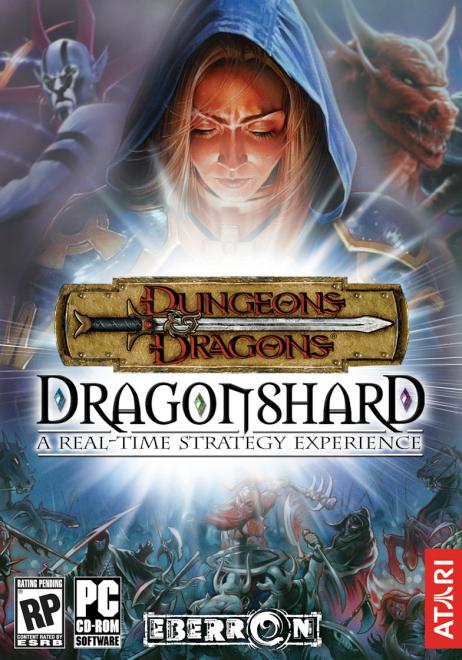Dungeons & Dragons: Dragonshard Interview
-
Category: InterviewsHits: 7909

Article Index
Page 3 of 3
GB: Tell us a bit about your decision to divide damage between all the units in a squad. What advantages does this route have and what effects will it have on game balance? Is it possible that some squads might become almost unstoppable if a player groups a highly destructive unit within several other defensive units? Charley: For those who aren't aware, calling upon soldiers is an alternative form of advancement for a particular captain unit. Once a soldier has been summoned and a squad is formed, you cannot focus fire on the captain in that squad, but rather only on the squad itself. As such, we have intended for recruiting soldiers to not only serve to make your captain more powerful, but also to help to keep them alive longer by saving them from focus fire. This is a choice that the player can make depending on their gameplay preference and the tactics and abilities of their opponent: you can choose to concentrate your forces in to several well stocked and reinforced squads, or instead distribute your resources to an array of individual captains. Soldiers cost much less than captains, but they cannot be controlled individually, so there is always a compelling choice for the player to make in terms of how choose to reinforce their armies.
The issue of defensive units protecting a given captain tends not to occur, given that each soldier for a given captain is essentially a low-level version of that captain (a Cleric summons level 1 Cleric soldiers to aid her). In addition, this means that when a Cleric recruits a soldier, you are not only improving that captain's survivability in that squad, but are also reinforcing its role. Cleric soldiers will perform an auto-heal on nearby damaged units, making a Cleric squad a sort of mini-field hospital. The result is a pretty interesting dynamic that we on the team have really enjoyed delving into given each of our preferred play-styles.
GB: What sorts of base defense will be at a player's disposal (walls, towers, etc)? Any defenses unique to Dragonshard that you can talk about?
Charley: Each base starts with a default set of walls around it to protect your buildings against an immediate rush (although a rush after 2-3 minutes or so of gameplay is not out of the question). These walls consist of three basic sections: Gates, which allow friendly units to enter and exit (and hide behind to heal and buff up during a siege); Walls, which simply offer a sturdy boundary; and Towers, defensive structures on the corners which automatically fire at incoming opposition.
These walls can be upgraded, if you so desire, increasing their resilience to damage and the amount of damage that the towers deal out. However, given how this would seem to reinforce a defensive, "turtling" style of play, it's worth noting that you cannot place towers on individual grid slots, so the towers on your nexus walls are all the default defenses you have available.
GB: Other than Dragons, Beholders, and Minotaurs, what other fantastical creatures from the Dungeons & Dragons world will we see? Will we see any planar creatures or demons of any kind?
Charley: In addition to the monsters mentioned in the earlier question, we do have a variety of large scale (Boss Monsters) in Dragonshard, including some planar creatures, such as the Marilith who hails from the Abyss, the Horned Devil (or Cornugon, to the old-school D&D players out there) who comes from the pits of Baator, and the Efreet, evil princes from the Plane of Fire.
These are in addition to classic favorites such as the Beholder, Umber Hulk, Drider, etc. An encounter with one of these Boss Monsters will require the player to strategically maneuver and tactically strike at key moments. Each of these monsters are fully adept at attacking multiple units at once, either through area of effect attacks, or a unique system that, in the case of the Marilith, allows her to acquire multiple targets and rotate various arms to strike each one individually. As such, the player will have their work cut out for them figuring out various strategies for tackling each of these deadly beasts.
GB: Lastly, can you give us an idea of what features you're planning on incorporating into multiplayer? Will players be able to share resources, build in each ally's bases, or have access to other team-oriented capabilities? Any multiplayer features unique to Dragonshard you can tell us about?
Charley: In multiplayer, we are planning on having a number of interesting win conditions other than simply (destroy every last remnant of your opponent). We have included a win condition that demands that the player hold key Places of Power on the map for a set period of time, and another win condition that requires the player's champion to collect a set number of artifacts found within the dungeons of the level (generally guarded by traps and/or the aforementioned boss monsters), which then must be held for a set period of time without the Champion being killed.
These alternative methods of winning will be in addition to various other multiplayer features we have planned. Building in an ally's base will not be available, as it presents too many complications given the complexity of the Nexus system and how it impacts unit leveling and special abilities. That said, we are certainly planning on implementing such features as resource and unit control sharing for team-based games, as we feel they are (standard) multiplayer behavior.
We'd like to issue our thanks to everyone at Liquid Entertainment and Atari, especially Charley and Shane, for taking the time to get our questions answered!


